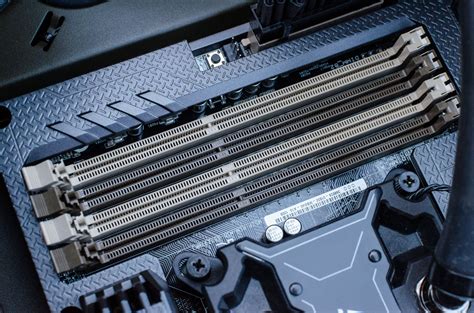Memory Slots: A Comprehensive Guide to Understanding, Installing, and Troubleshooting
Introduction
Memory slots, also known as RAM slots, are crucial components of a computer system that serve as receptacles for memory modules, enabling the computer to access and store data temporarily. They play a vital role in determining the performance and capabilities of your system. In this comprehensive guide, we will delve into the intricate world of memory slots, covering everything from their types, configurations, and installation to troubleshooting and optimization techniques.
Types of Memory Slots
Memory slots come in various types, each designed to accommodate specific types of memory modules. The most common types include:
-
DIMM (Dual In-line Memory Module): Used in desktop computers and servers, DIMMs have two rows of pins on each side of the module.
-
SODIMM (Small Outline Dual In-line Memory Module): Found in laptops and other compact devices, SODIMMs are smaller versions of DIMMs with a single row of pins on each side.
-
RIMM (Rambus In-line Memory Module): Used in older systems, RIMMs have a unique design with pins arranged in a staggered pattern.
Memory Slot Configurations
Motherboards typically have multiple memory slots, allowing users to install multiple memory modules to expand their system's memory capacity. The number of slots available varies depending on the motherboard model and form factor. Common configurations include:
-
Single-channel: One memory module installed in a single slot.
-
Dual-channel: Two memory modules installed in matching slots (e.g., slots 1 and 3).
-
Triple-channel: Three memory modules installed in matching slots (e.g., slots 1, 3, and 5).
-
Quad-channel: Four memory modules installed in matching slots (e.g., slots 1, 2, 3, and 4).
Installing Memory Modules
Installing memory modules is a relatively straightforward process. However, following the correct steps is essential to ensure a smooth and successful installation:

- Turn off the computer and unplug it from the power source.
- Open the computer case.
- Locate the memory slots on the motherboard.
- Align the notch on the memory module with the corresponding notch on the memory slot.
- Push down on both ends of the memory module until it clicks into place.
- Repeat this process for any additional memory modules.
- Close the computer case.
- Connect the power cord and turn on the computer.
Troubleshooting Memory Slot Issues
If you encounter problems after installing a memory module, here are some troubleshooting steps you can try:

- Power cycle the computer.
- Try reseating the memory module(s).
- Check the motherboard manual for compatible memory types and configurations.
- Contact the motherboard manufacturer for support.
Benefits of Populating All Memory Slots
Filling all memory slots on your motherboard offers several benefits:
-
Increased memory capacity: More memory modules mean more space for storing data and programs.
-
Improved performance: By populating all slots, you can enable dual-channel, triple-channel, or quad-channel configurations, resulting in faster memory access speeds.
-
Reduced latency: Distributing data across multiple memory modules can minimize the time it takes to retrieve data, leading to improved system responsiveness.
Tips and Tricks for Optimizing Memory Slots
Here are some additional tips to help you get the most out of your memory slots:
- Use the highest memory capacity modules supported by your motherboard.
- Match memory modules with the same speed and timing.
- Enable XMP (Extreme Memory Profile) or DOCP (Direct Overclocking Profile) in the BIOS to overclock your memory.
- Monitor your memory usage to identify any potential bottlenecks.
FAQs
Q: How many memory slots do I need?
A: The number of memory slots you need depends on your desired memory capacity and system requirements.

Q: Can I mix different types of memory modules in the same system?
A: Generally, it's not recommended to mix different types of memory modules as it can lead to compatibility issues.
Q: How often should I clean my memory slots?
A: It's not necessary to clean your memory slots frequently. However, if you notice any dust or debris, you can use a soft brush or compressed air to remove it.
Conclusion
Understanding and properly utilizing memory slots is crucial for maximizing the performance and capabilities of your computer system. By choosing the right memory modules, configuring your slots correctly, and optimizing your settings, you can ensure that your system has the best possible memory setup for your needs.


